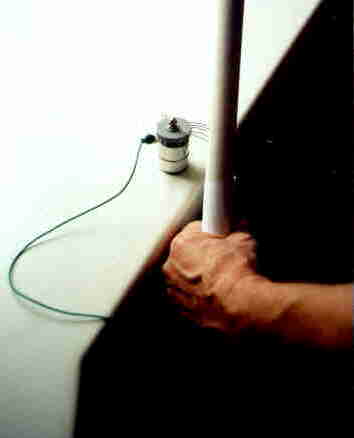Since both Westminster and Berkeley Montessori have ongoing marine and fresh-water aquatic projects, I couldn't resist posting a recent online discovery that should prove a very valuable resource.
For years, I have seen to many aquariums that looked something like this one, with colored gravel and plastic plants. That the fish survived was a testament to the power of Darwinian evolution to produce incredibly hardy commercial goldfish.

The more adventurous hobbyists typically could sometimes manage to keep a few live plants from turning to mush and clogging up the filters, but they still ended up looking something like this:
But not long ago, I stumbled upon a fellow named Takashi Amano, who had become an international sensation for his incredible planted fresh water aquaria. Look at few of his tanks and see what is possible if you REALLY understand the chemistry, life-cycles, plant and animal respiration, the physics of illumination and filtration, and the overall ecology of the bio-system. (click on the images to see higher resolution versions.)

Check out
a more extensive gallery of Takashi Amano inspired work here.
For some time, my built-in reaction was, "wow, pretty cool, but I'm not a retired Japanese watch maker with thousands of hours to invest in an aquatic version of a bonsai forest." But over the last few years, the "Planted Aquarium" community has emerged along with a body of literature articulating the detailed science and techniques to maintaining truly balanced ecosystems on a miniature scale that can thrive like never before.
Better yet, a commercial franchise, "Aqua Design Amano" has grown up around the practices starting in Japan (naturally) and finally reached American shores through a distributer call "Aqua Forest Aquarium!" You can now order all of their recommended equipment, supplies, plants, chemical supplements necessary to create and maintain these fabulous bio-systems through the
AFA online portal here. The web site is a great starting point complete with some starter FAQs.
At some level it sounded great, but I've had enough middling success with fresh water tanks that I remained skeptical at the level of effort necessary to achieve such amazing results. But browsing the web site, I discovered that they had recently opened a retail store in San Francisco. So I hustled on over last week to discover a store with the most amazing fresh water environments I had ever seen in person (and that includes places like the Monterey Bay Aquarium). Here are some recent photos of what I saw in the store.
Everything was laid out very nicely for anyone to come in and pick up either entire kits or individual items (all of which are available online) necessary to recreate the exact environments on display, along with some nice reference materials. The equipment, from the tanks, to the lighting, filters, CO2 systems and substrates, was generally of exceptionally high quality, and priced to match. In some cases, less expensive substitutes that should suffice (for example
cheaper tanks, and
alternate metal halide lamps with similar bulbs for much less, and also
here at Marine Depot) but there is no arguing with their success, and the setups were stunning in a Japanese minimalist sort of way.
The tanks, for example, while more expensive than the garden-variety tanks you can get at the Pet Warehouse, are designed with thicker-than-usual glass and fabricated without an external frame. The bare glass look is very clean and really focuses attention on the eco-system without obstructing the view with black plastic. It will likely come down to an aesthetics for the price sort of trade off for each individual purchaser. My next tank is, without a doubt, going to use their substrate materials, and I haven't seen a more beautiful tank in the nature-as-art category.
Here are some of the books that were on prominent display (click on images to go to amazon purchase pages):






The best part of the visit, though, was my extended conversation with Marjorie, clearly one of the store managers. She was very forthcoming about the details and secrets of how to approach every step of the process including how to attack a pernicious algae problem I was having in one of my tanks. The whole thing seems entirely doable with not much more, if any effort than the garden variety tank.
The net result of this exploration is that there are ENDLESS hands-on science opportunities throughout the process of setting up, maintaining, and optimizing one of these environments, from chemical analysis, design and construction, aquatic landscaping, botanical studies, fish breeding and genetics, even art and design in the plant/rock/wood selection and layout....the list goes on and on.
I could imagine a whole semester long class sequence with rows of small tanks, one per student or small team of students, where each team can select a particular part of the world where they will recreate the water, plant, and animal conditions and see if they can't develop a complete thriving ecosystem.
All the while, they can take chemical and data, learn to use chemical tests, PH sensors and do data analysis on the whole lot. You could even go so far as to link either aquarium micro-controllers or computers to the tanks to control the heaters, lights and pumps.
Another approach might be to have a large team create a single larger environment of their own, perhaps going to TAP Plastics to get Acrylic aquarium walls fabricated according to their own custom design. Any other suggestions?
currentVote
noRating
noWeight

































![[SCHEMATIC OF DEVICE]](http://amasci.com/electrom/e-field2.gif)
![[Drawing: FET and LED soldered to 9v connector]](http://amasci.com/emotor/fetdet1.gif)


